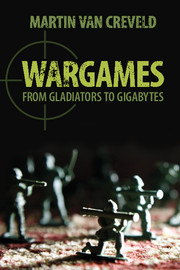Book contents
- Frontmatter
- Contents
- Acknowledgments
- Introduction
- 1 On animals and men
- 2 Games and gladiators
- 3 Trials by combat, tournaments, and duels
- 4 Battles, campaigns, wars, and politics
- 5 From bloody games to bloodless wars
- 6 Enter the computer
- 7 The females of the species
- 8 Conclusions: The mirrors and the mirrored
- Index
- References
7 - The females of the species
Published online by Cambridge University Press: 05 April 2013
- Frontmatter
- Contents
- Acknowledgments
- Introduction
- 1 On animals and men
- 2 Games and gladiators
- 3 Trials by combat, tournaments, and duels
- 4 Battles, campaigns, wars, and politics
- 5 From bloody games to bloodless wars
- 6 Enter the computer
- 7 The females of the species
- 8 Conclusions: The mirrors and the mirrored
- Index
- References
Summary
To play or not to play
Ever since God created Adam and Eve women have always formed about half of humanity, as they still do. Yet an extraterrestrial being watching participants at almost any kind of wargame, past, present, and presumably future, would never guess that this is the case. Female reenactors form perhaps 2–3 percent of the total. As it happens, the number who served in the Red Army during the Russian Civil War and in the US armed forces during World War II was similar. Many groups, seeking authenticity, do not allow women to join at all. Some appear to regard them as an evil that may or may not have to be tolerated. Others, to the contrary, are constantly on the lookout for female recruits who could fill the ranks of their cantinières (canteen women, dating to Napoleonic times), medical corps, signal service, or secretaries. One British group of reenactors has even established an ATS (Army Territorial Service) unit specifically so that women are able to join and play along in a “historically accurate role.”
According to the best available book on the subject, most women get involved in the hobby in the wake of their male relatives or boyfriends. Most are found at the larger, more public, and less authentic events; reenactments that try to capture the fatigues of real war, such as operating under difficult weather conditions or camping outdoors, tend to attract fewer women than the rest. But it is not just a question of avoiding physical effort and what are sometimes somewhat Spartan living conditions; as far as the available figures go, women playing computerized wargames also form a small minority. Based on the surveys, Dunnigan says that, at the time when he was selling his hexed wargames by the hundreds of thousands, the number of women who showed any interest in them only amounted to perhaps 1 percent of the total. Women who participate in the more physical wargames are rare, but they do exist.
- Type
- Chapter
- Information
- WargamesFrom Gladiators to Gigabytes, pp. 270 - 307Publisher: Cambridge University PressPrint publication year: 2013



